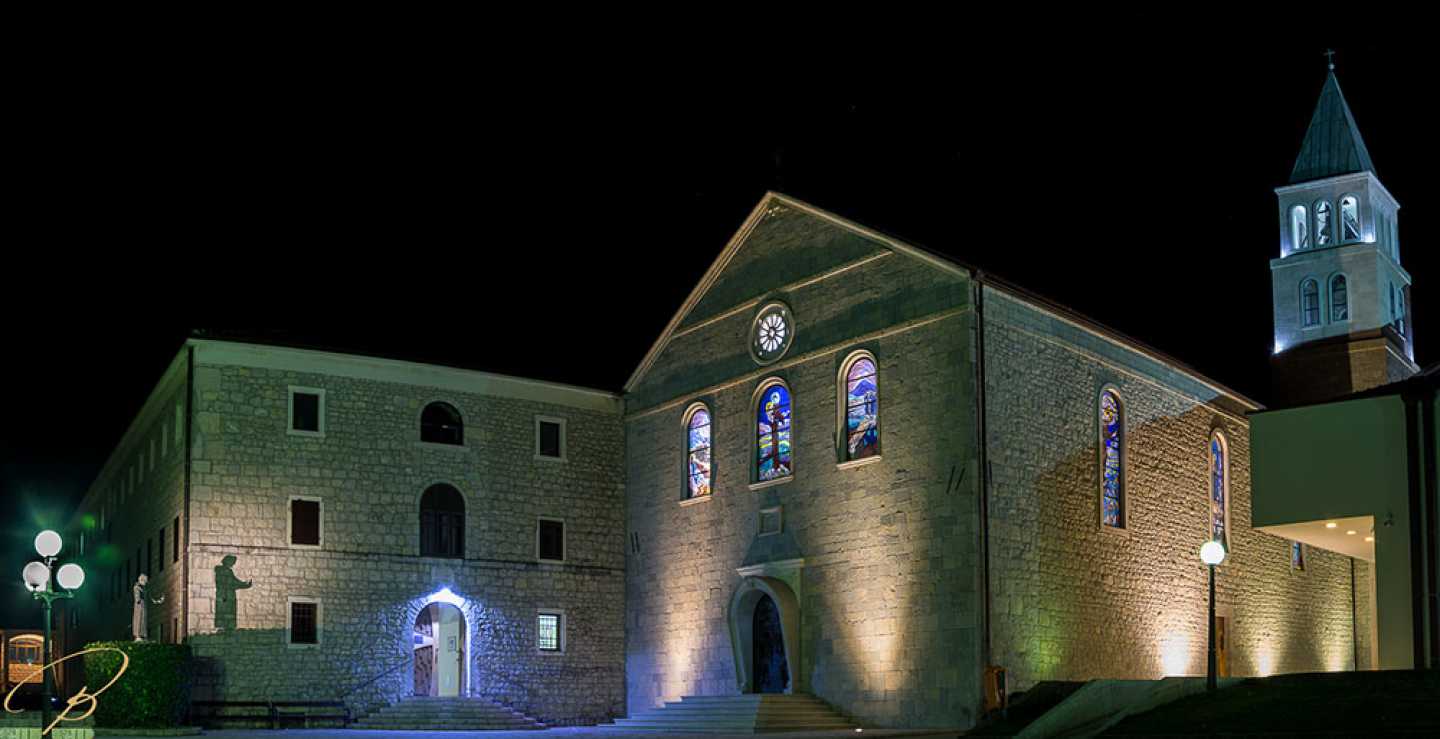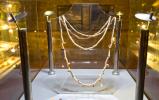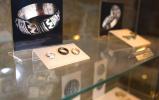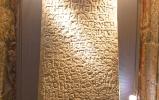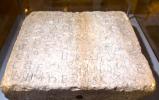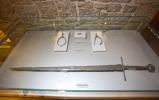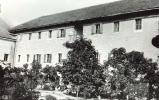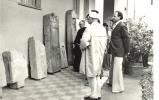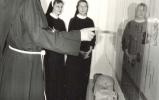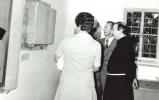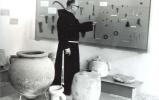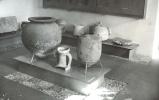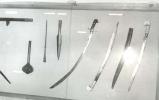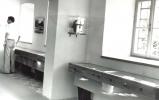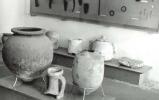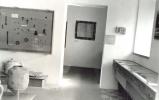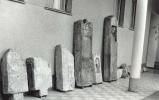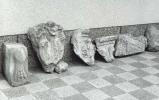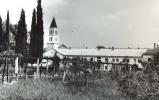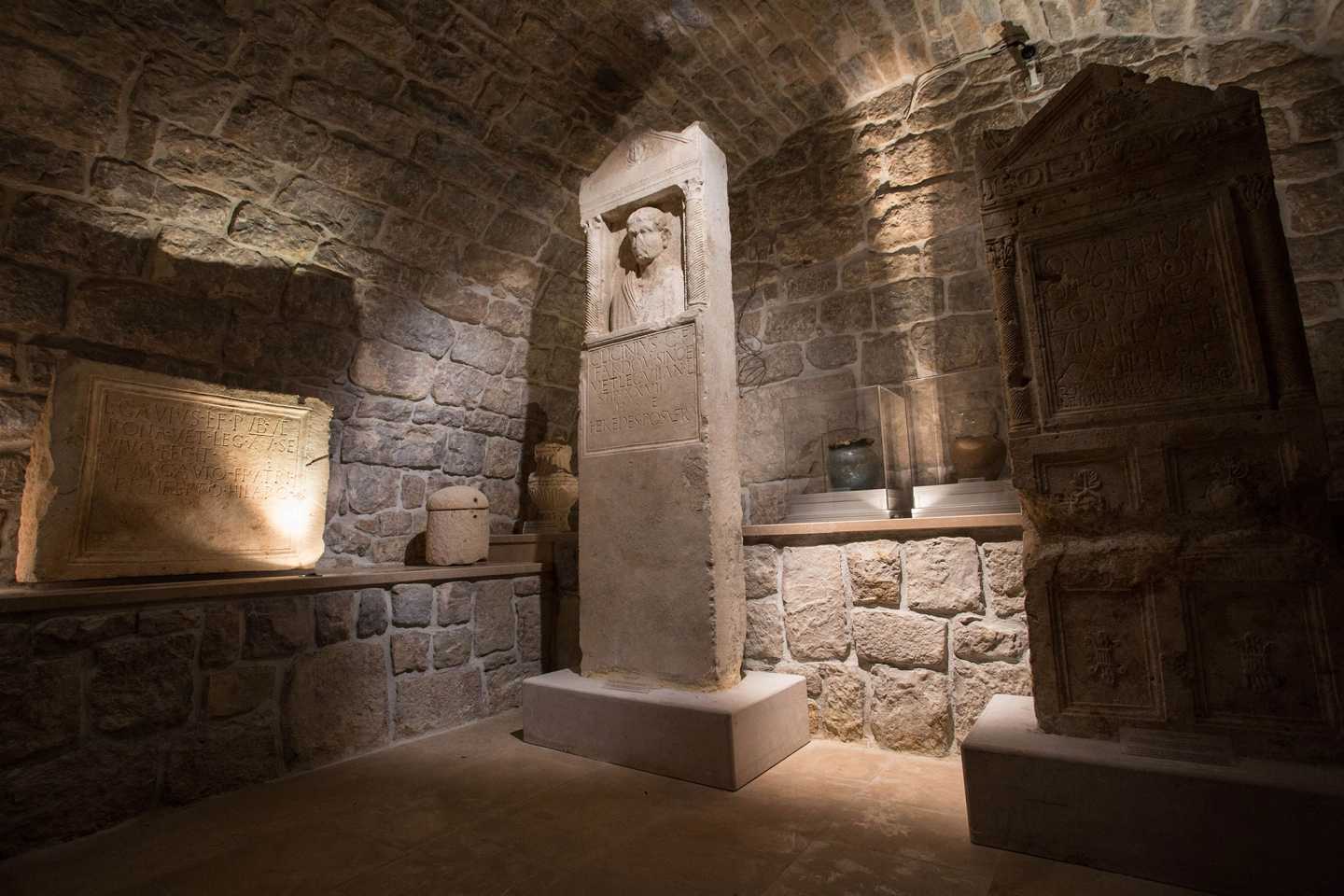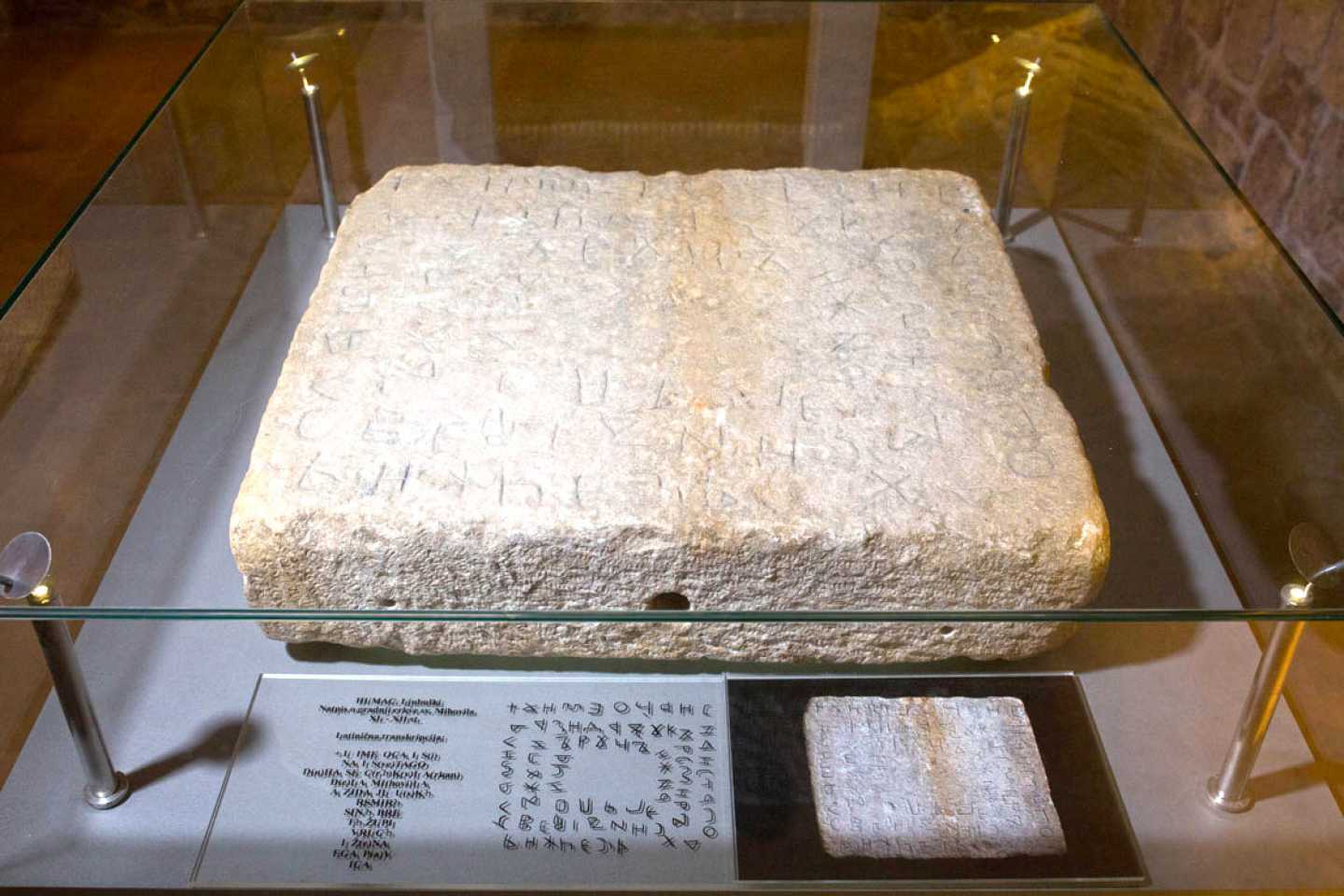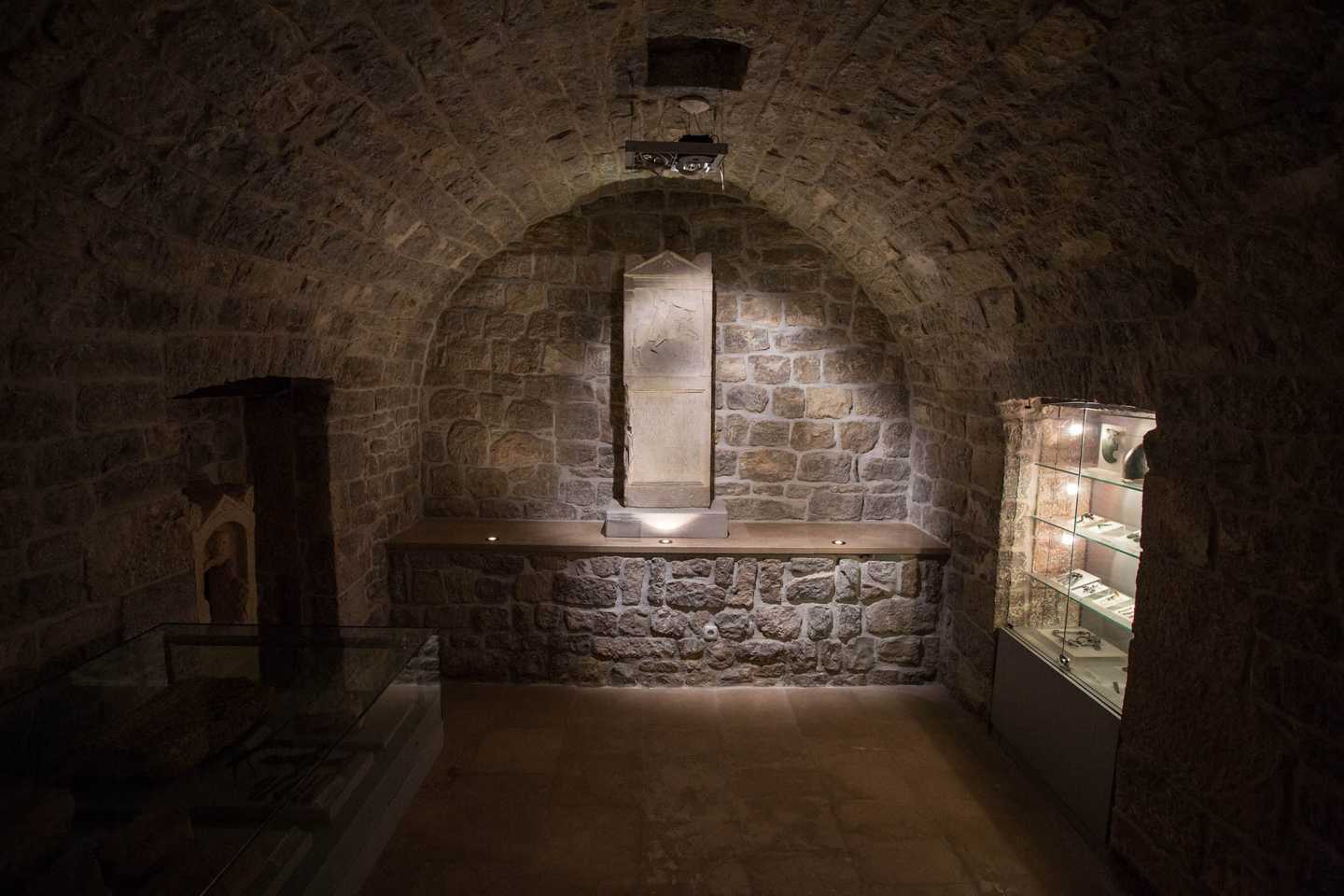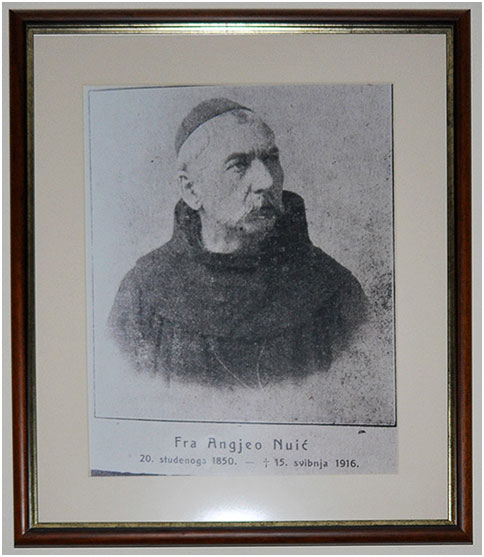 Fr. Angjeo Nuić (Drinovci, 1850 - Mostar, 1916), archeologist, conservator and founder of the museum at Humac; picture on the wall of the parish of the parish office of St. Ante Padovan on Humac.
Fr. Angjeo Nuić (Drinovci, 1850 - Mostar, 1916), archeologist, conservator and founder of the museum at Humac; picture on the wall of the parish of the parish office of St. Ante Padovan on Humac.
Generations of Herzegovian preist´s have collected, guarded and traced material traces of the past of their country and of Croatian cultural and national identity in these areas. Since the foundation of the Franciscan Province of Herzegovina, the idea was considered of f. Petra Bakule (Batin, 1816 - Mostar, 1873) about the opening of a museum that also had an enlightenment role.
In the spring of 1884, Fr. Angjeo Nuić repairs a monastery room in the first museum institution in Bosnia and Herzegovina. Today's museum space was arranged in 2002. year.
The idea of museum formation appeared in the mid-19th century in the circle of Herzegovinian Franciscans. Studying at the Italian and Austrian universities at that time and sightseeing of the museums where they could see and a few exhibits from their homeland, on the one hand, and the recognition of the great illumination and the lack of schools and cultural institutions, were the idea of establishing such an institution in Herzegovina.
Returning to the hometown and acting on a pastoral, cultural and enlightenment plan, especially after separation from the Bosnian Srebrenica and the founding of the Herzegovinian Franciscan Province, they could think of the idea of opening a museum that would have, above all, the enlightenment role. The preservation of cultural treasures was not strange either. Insecure times of Turkish occupation, ecclesiastical dishes, books, paintings and other precious objects, for security often had to carry with them. Recording, collecting and storing historical material cultural and natural history preparation Franciscans practiced before, but since the mid nineteenth the work was in organized forms.With the appearance of some parishioners and other learned men of that time, there were numerous archaeological and other museum items arriving at the monastery, which over time became a signpost for explorers for discovering important sites such as: Roman farm (villa rustica) in Mogorjel near Čapljina, Roman military camp Gračine on Humac, layered archaeological site in Gorica near Grude, and many other far more unexplored localities, such as the Roman settlement in Grac near Posušje.
The first great step towards realizing the idea of museum foundation was made by historian, writer and builder fra. Petar Bakula (Batin, 1816 - Mostar, 1873). In 1867 he published his in Latin, in which, among other things, he presented his observations and researches in archeology, history, historical topography, ethnology, natural sciences and so on. It has become a part of more serious work on the research of past, and given information, despite the later reckless construction, has not lost its actuality today.Fr. Anjio Nuić (Drinovci, 1850 - Mostar, 1916), archaeologist, conservator and museumer, deepening Bakulina's knowledge of history and archeology, performed the first field archaeological examinations, revealing the Roman military camp at Gračine on Humac and Karaula in Tomislavgrad the remains of Roman buildings, and stone memorials with inscriptions. The moving archaeological finds he had come upon his fieldwork, as well as the purchase and the gifts, he sent to the monastery premises on Humac, intending to present them to the public.He got a room in the monastery, made appropriate showcases, and in the spring of 1884 he opened for the public, establishing the first museum institution in Bosnia and Herzegovina. That same year, he made the statute and began to lead the Museum Monument, that is, the entry book of collected objects.
The work on collecting, storing and studying museum materials continued to be the same, and the space allocated to the museum soon became small. This problem has been following this institution since its begining until today when it was finally solved for longer periods of time. In spite of the difficulties that have been going on for more than a hundred years - a cramped space, two World War and Homeland War, a lack of experts, limited material conditions - museum collections continued to fill, but in 1969 only a more appropriate space was made in east wing of the monastery with three rooms for the prehistoric, antique and medieval collection, and the canopy in the atrium for the stone monuments. This museum exhibition was open to the public in 1973, and six years later, due to the adaptation of this part of the monastery, it had to be closed.In the meantime, a large number of visits on the one hand, and with the other marking of a rare jubilee such as the 100 anniversary of foundation, have influenced the creation of conditions for the realization of the new setting according to the modern principles of presentation of museum material. In 1984 the museum was reopened in one larger and three smaller halls, and the stone monuments were placed in the cloister. The permanent exhibition consisted of: archaeological and cultural-historical collection, and lapidarium. After about two decades, the exhibited objects had to be removed again from the threatening war, so the museum was closed again in 1992.
There is a whole new museum exhibition in front of you, made of archeological objects collected in the wider area of Herzegovina.They originate from a wide period of time. The first stage of prehistory, the early Stone Age (Paleolithic), is presented with only one exhibit. The following periods, starting from the early Stone Age (Neolithic), the Copper Age (Eneolithic), Bronze and Iron Periods of Prehistory, Roman and Late Antique, and at the end of the Middle Ages, are represented by the number of exhibits. This wide time range of around 16,000 years is not equally represented by objects in the music collections.The least of them are from the earliest periods of prehistory and the Middle Ages, so almost all the objects of the museum are represented in the exhibition, while the other archeological artefacts are made of the selection of the most reputable remains of material culture. Especially rich is Roman collection for well-known reasons, that is the Ljubuški region is famous for its many monuments of this time.
This exhibition of archeological monuments from the wider area of Herzegovina will allow visitors to have an insight into the spheres of the material and spiritual culture of the inhabitants who have been displaced over this long time on her ground and discover the lesser known activity of the Herzegovinian friars who worked generously and reluctantly to generations collecting, guarding and studying of preserved material traces of the past of their country and its people.


